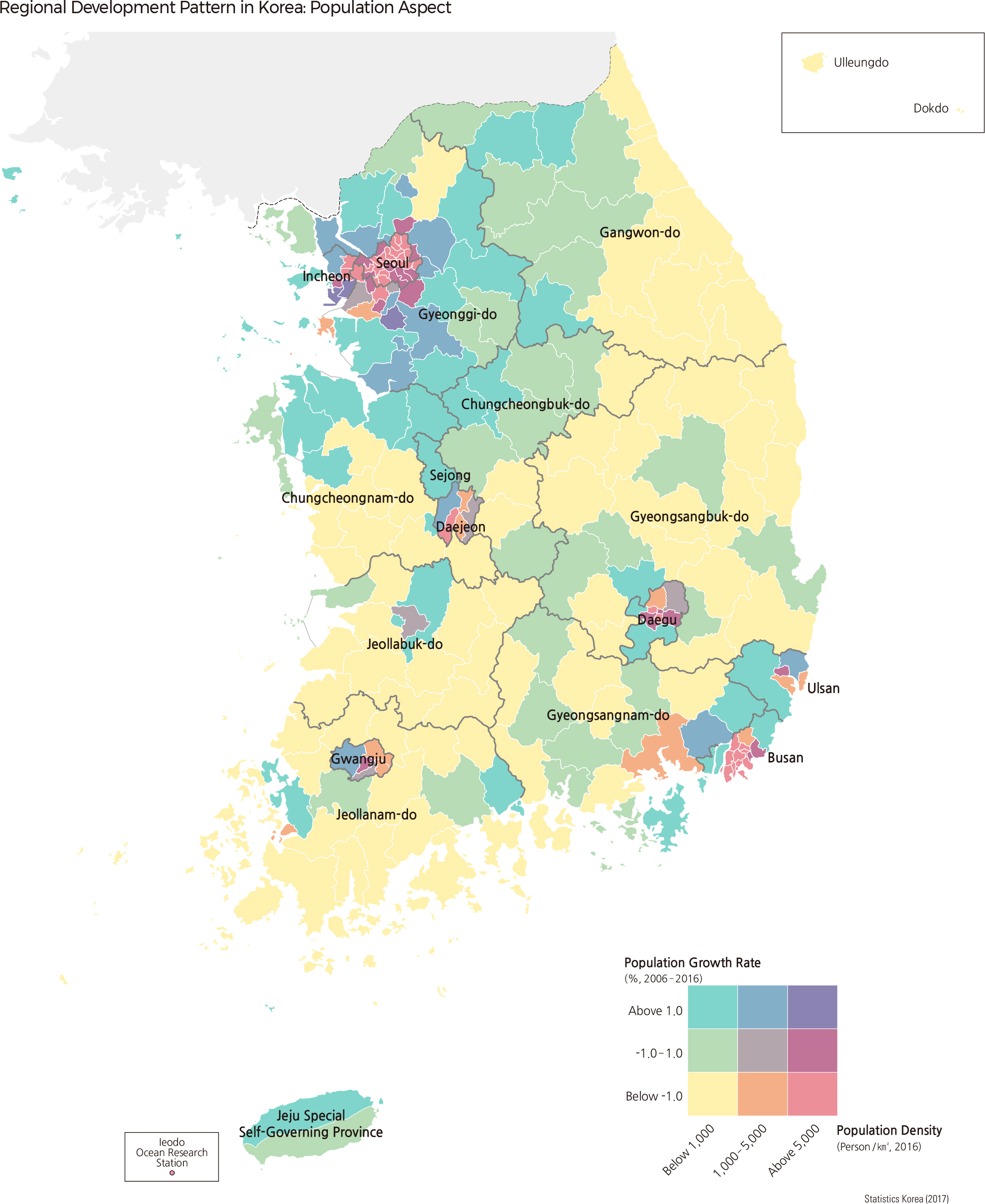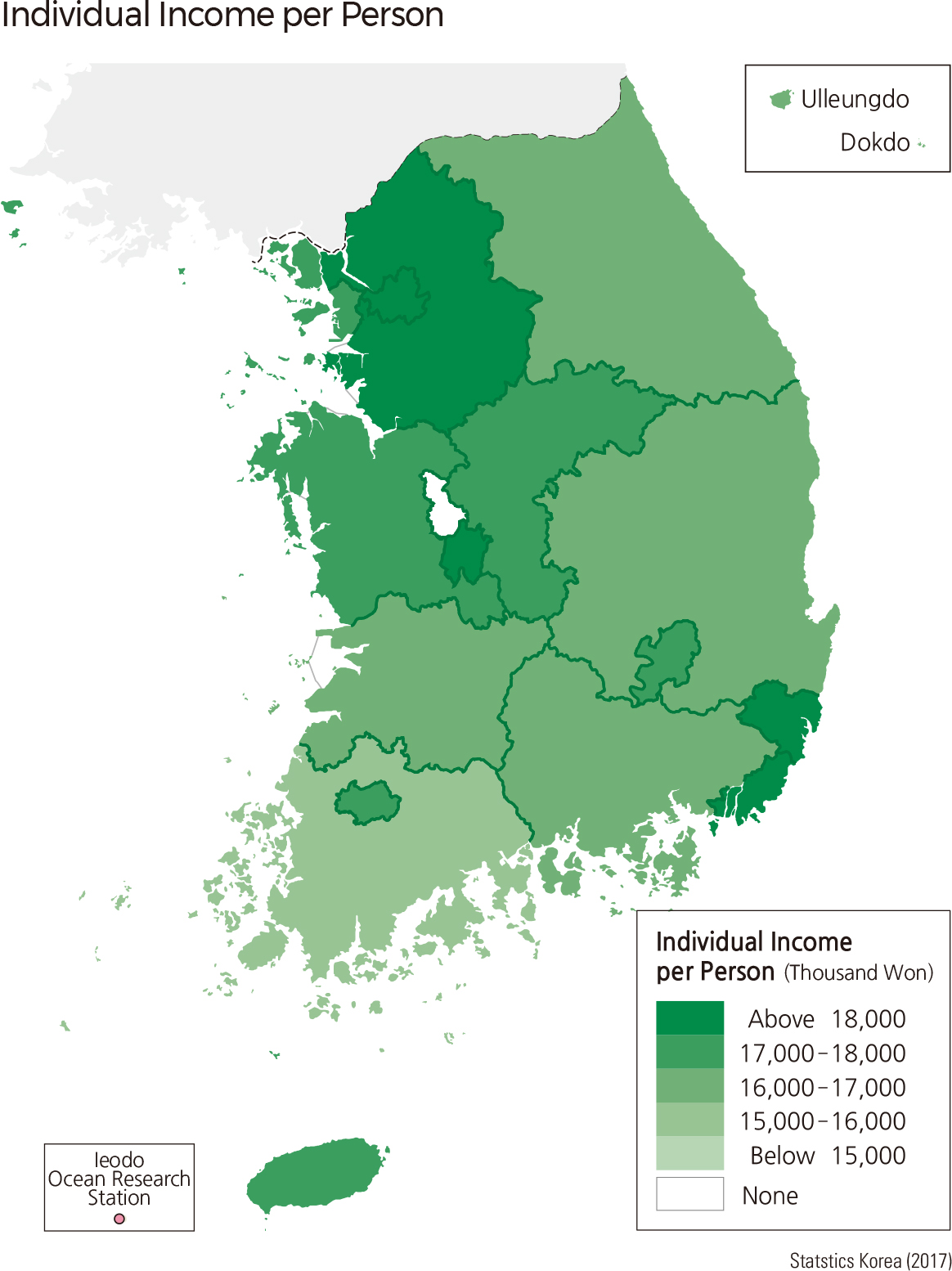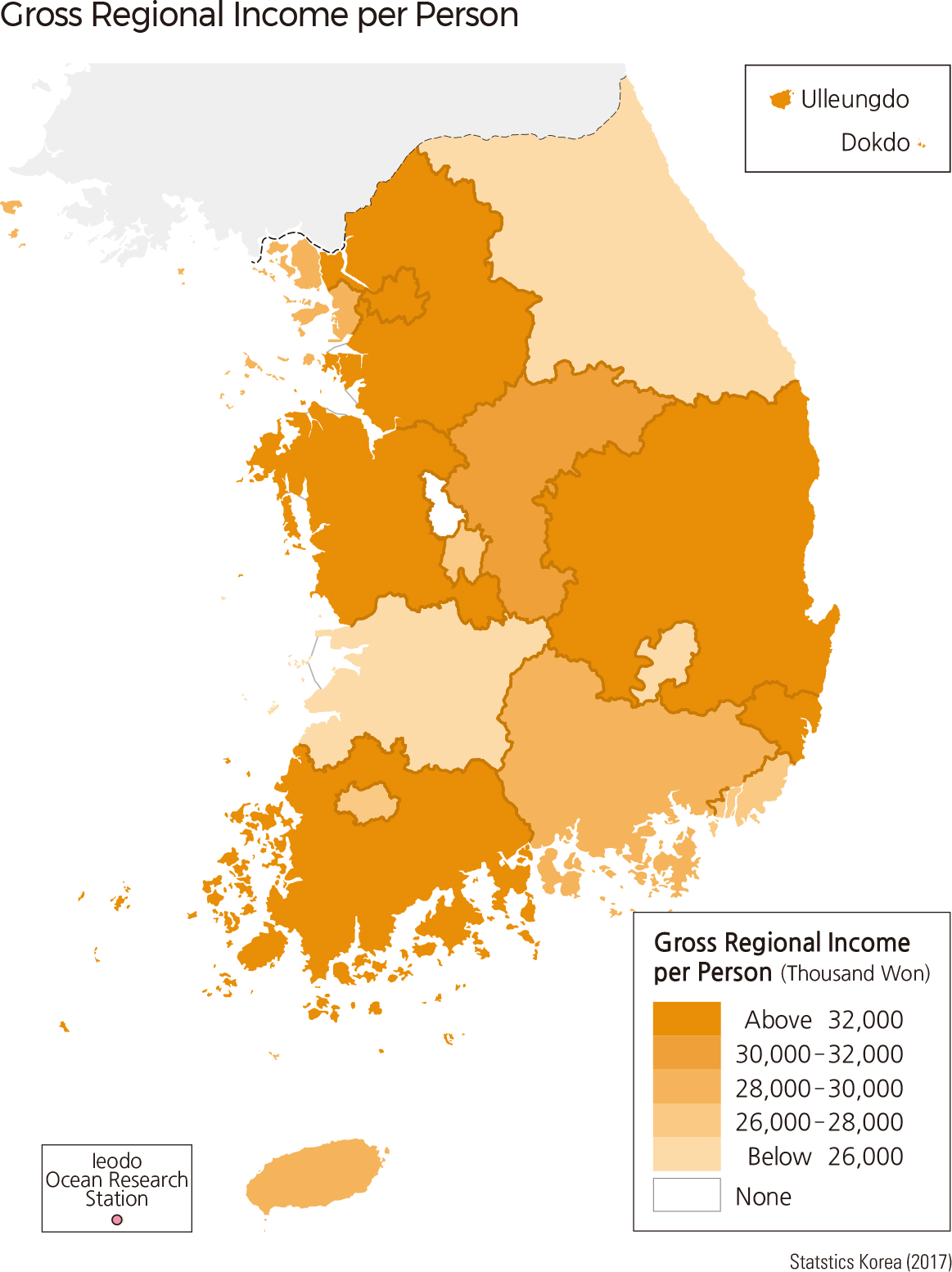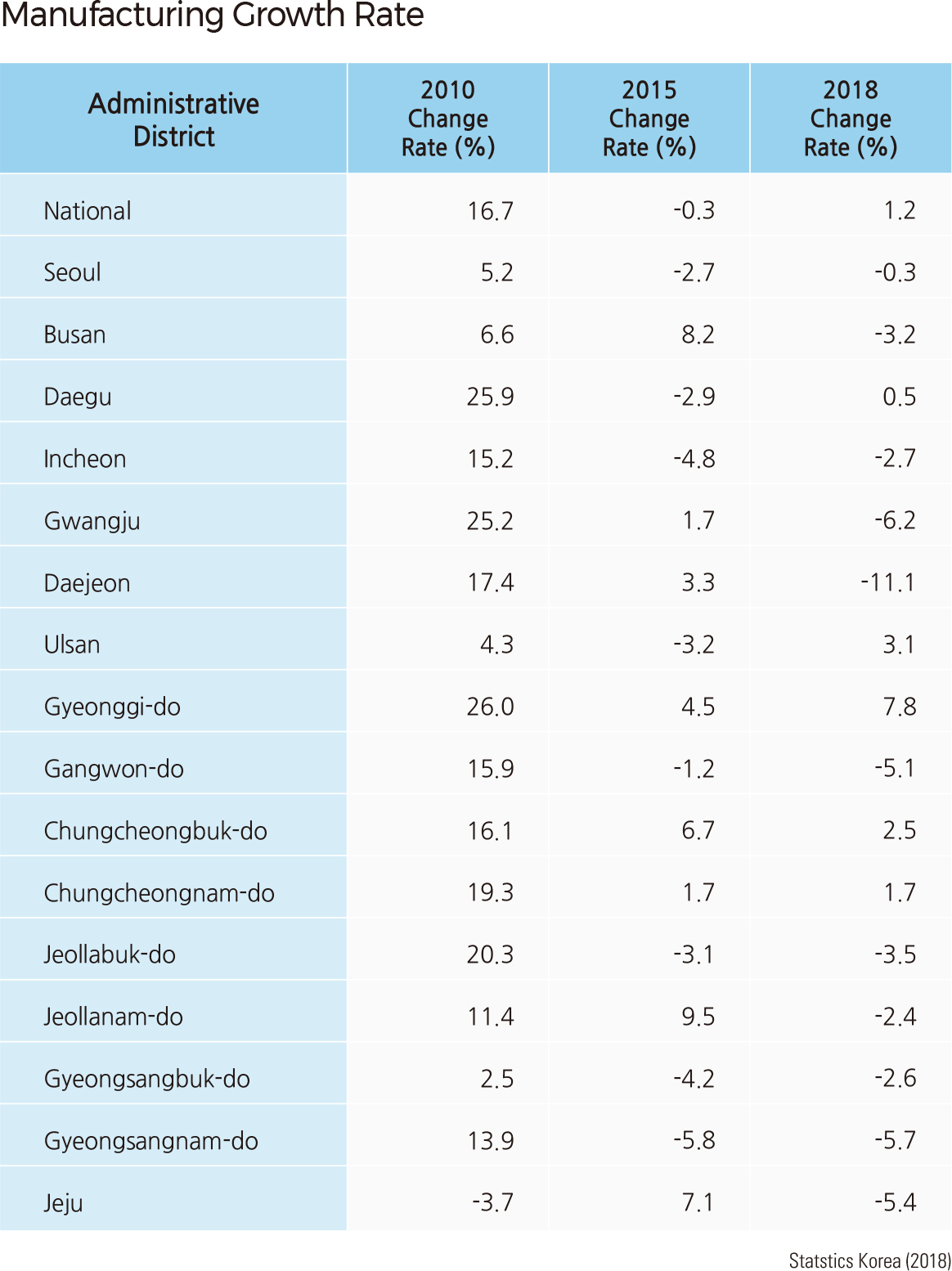English I 2019
In the Special Act on Balanced National Development (SABND) that provides an institutional basis for regional development policy in Korea, regional development is defined as “activating regional economies by facilitating region-specific development and inter-regional cooperation based on autonomy and creativity, and strengthening regional competitiveness by improving the quality of life of citizens.”
The spatial patterns of regional development in Korea continue to be very uneven. The structural regional disparities between the capital region and the provinces, as well as between the urban and the rural regions, resulted from the rapid modernization and industrialization in Korea in the post-war decades. There have been various policy-driven attempts to help overcome these disparities, but thus far such redressing has proven to be a long and complicated process. In the 2010s, there was a policy shift toward emphasizing both regional empowerment and the significance of quality of life issues, both of which were intended to lessen the regional disparity.
The Special Account for Balanced National Development, introduced in 2005, was renamed the Regional Development Special Account due to changes in the policy framework for regional development in the Lee Myung-bak administration. In 2013, the Park Geun-hye administration ushered in a shift in regional development policy that resulted in a new focus on primary-level capacity. The enactment of projects such as the “HOPE Area” represents a new era in regional development. The paradigm shift can be seen in gestures such as the renaming of the Special Account for Regional Development: The Jeju Special Self-Governing Province Account remains the same, but the Sejong Special Autonomous City Account has been newly created.
Since the amendment of the SABND in January 2014, the regional development committee's control tower function has been strengthened with an increasing regional development budget, and the organization process has been shifting toward a bottom-up procedure. Above all, in consideration of city, county, and district opinions and business demands related to the promotion of local happiness, the block grant budget has been dramatically increased to promote the overall size of the regional development special accounting and to enhance the autonomy of local governments. The share of welfare and cultural projects has also increased.
The Moon Jae-in administration, launched in 2017, focuses on the gap between the Seoul metropolitan area and the other regions, while maintaining sustainable growth by considering new patterns of regional issues such as low growth and deep polarization, population cliffs and local extinction crises, regional industry crises, and lack of response to the Fourth Industrial Revolution. As a solution for national development, the government is promoting a new, ambitious, and balanced national development. To this end, it sets the vision of balanced national development as “a country with a strong region and balanced Korea,” and strives to achieve the goal of “establishing a regional-led independent growth base” through the implementation of three strategies and nine core tasks. |




